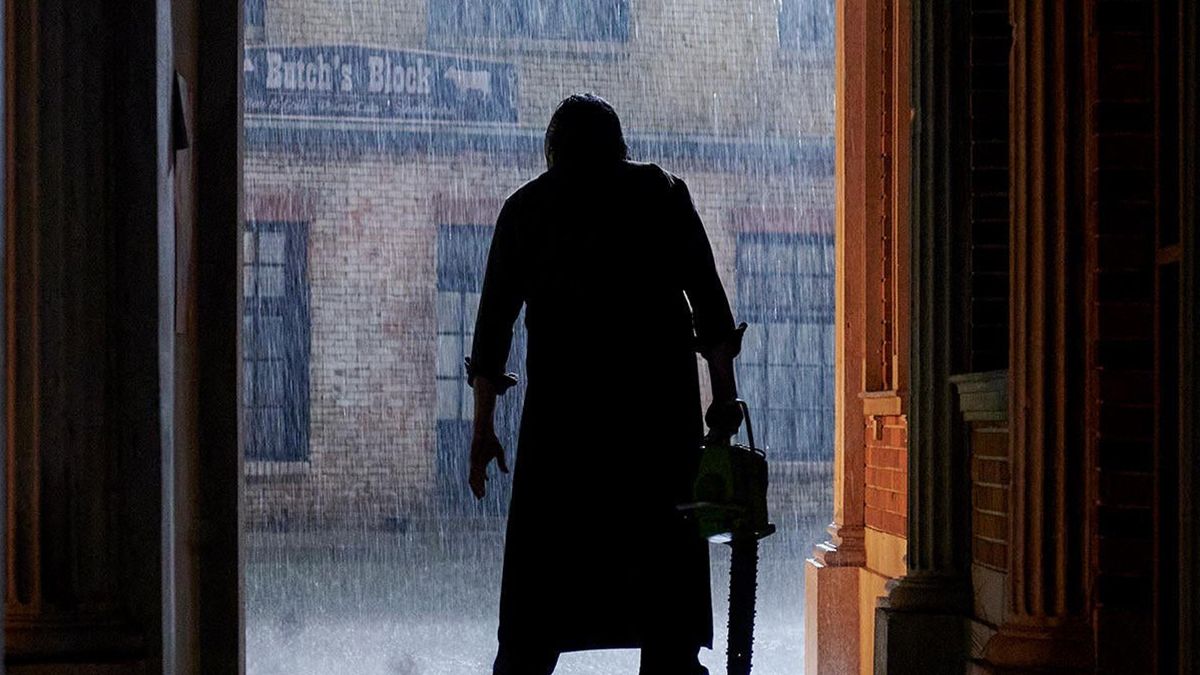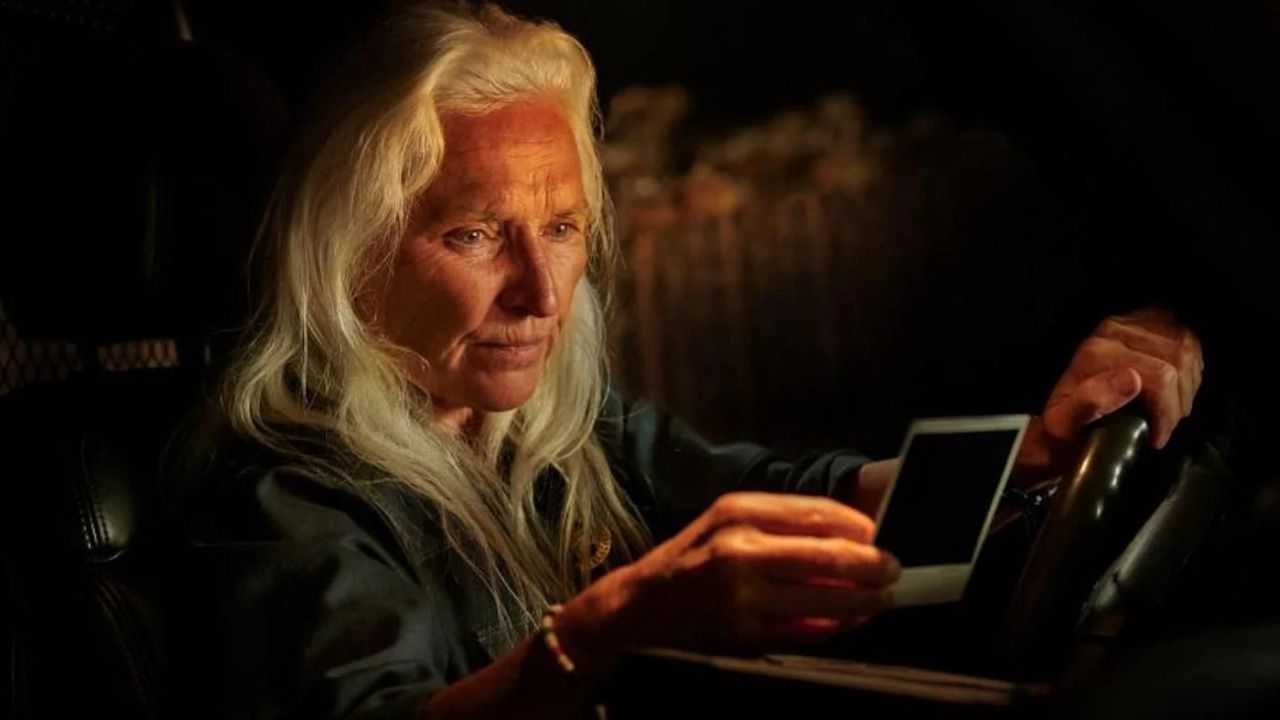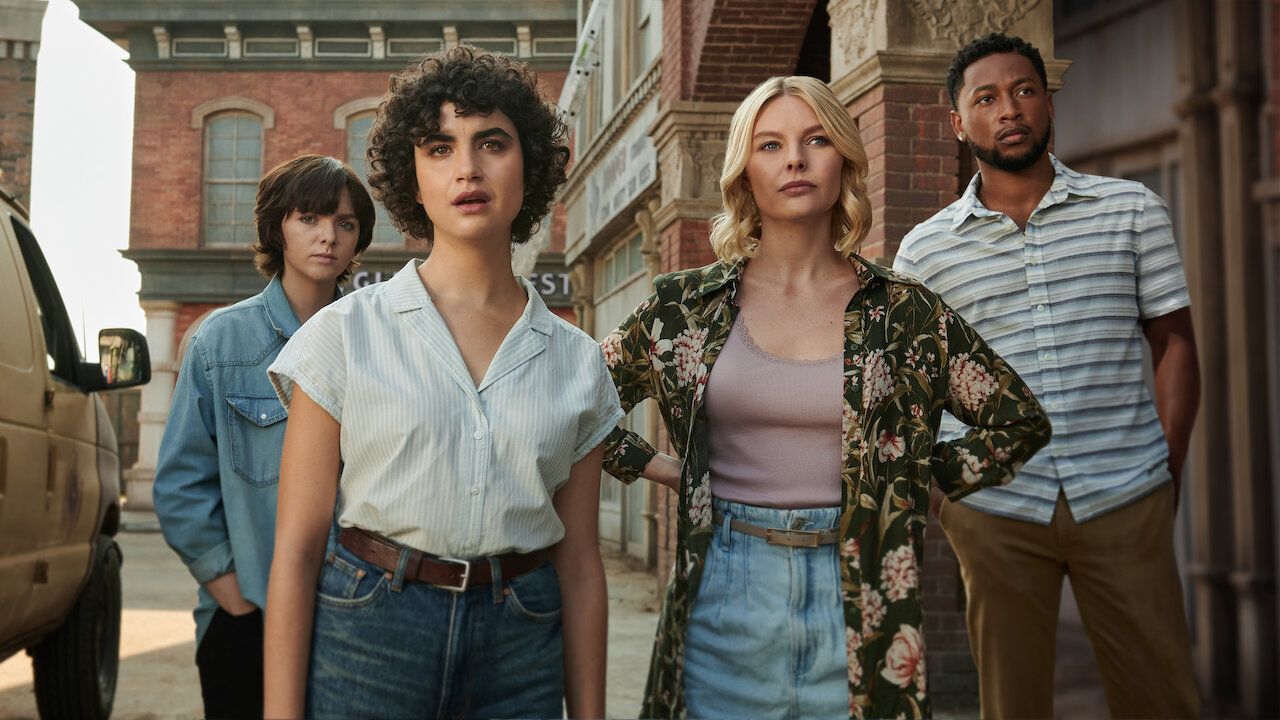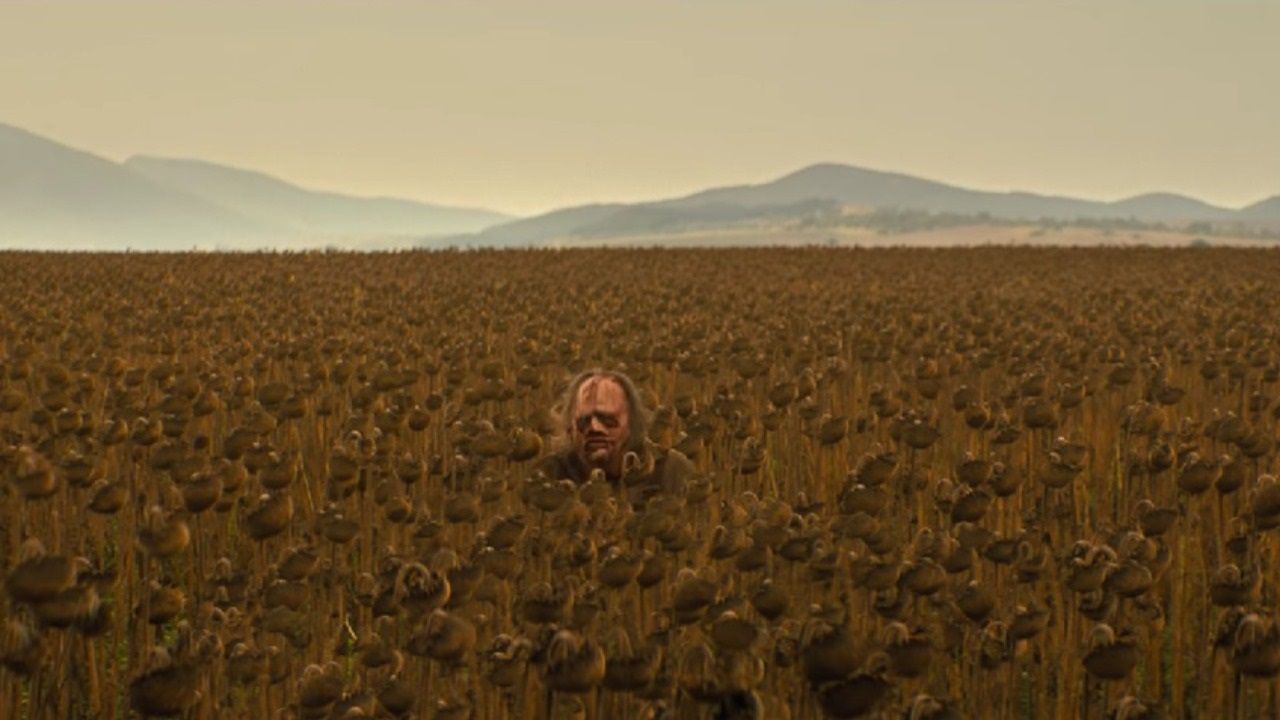Perhaps Halloween Ends this year, but The Texas Chainsaw Massacre seems to be starting again all over. It's been almost 50 years since the release of Tobe Hooper's original classic, an important touchstone in horror that sawed open and dissected (sometimes literally) American hippies, cults, and the nuclear family. The original The Texas Chain Saw Massacre (as it was then clumsily titled) was a nihilistic cinematic explosion in 1974, years before Halloween, Friday the 13th, or any other massive horror franchise would be bloodily birthed into the pop culture lexicon with shrieks. As such, it essentially ties Black Christmas as the first true slasher film, even if its slashing was motor-powered.
Interestingly, it took Tobe Hooper 12 years to follow up his film, a lifetime considering that six Friday the 13th movies were made in less than six years. The Texas Chainsaw Massacre 2 was actually a parody of sorts, possibly indicating Hooper's disdain for franchise culture; it's a ridiculous mess of a film, a cult classic that takes the original Texas Chain Saw and injects it full of speed and hallucinogenics, resulting in a bonkers bonanza of rock and roll, a screaming Dennis Hopper, over-the-top Tom Savini gore, and carnivalesque grotesqueries.
50-Year-Old Leather
The new iteration of Texas Chainsaw Massacre on Netflix is nowhere near as dark and bleak as the first film, nor as wild and silly as the second. While it's by no means as good as those two films, it is also neither as predictable nor artless as the six sequels which followed them. Director David Blue Garcia (whose vision is artfully enhanced by his cinematographic credits) has made the best Massacre in 35 years, though with a largely weak franchise, this alone is hardly any evidence of the film's worth.
Cinematic reboots of great horror films and franchises have taken off recently, with Poltergeist, Evil Dead, Child's Play, and Halloween, among others, striving to reinvent the horror movies and their trajectories for modern audiences. With its open ending, Netflix seems to be doing just that with Texas Chainsaw Massacre, which, like David Gordon Green's Halloween from 2018, is a direct sequel to the original film.
Again, like the Halloween reboot, Texas Chainsaw Massacre takes place roughly five decades later and includes the last woman standing and original hero (and 'final girl') of the first film. Marilyn Burns played this survivor, Sally Hardesty, in the original film, and in a brief cameo for the 1995 sequel Texas Chainsaw Massacre: The Next Generation (which everyone forgets had Renee Zelwegger in an early starring role, as well as Matthew McConaughey). Seeing as Burns passed away in 2014, Olwen Fouere takes over the role in the Netflix update.
'Like Halloween' are two words that will, unfortunately, be forever connected to this new Texas Chainsaw Massacre. Sally Hardesty is seen in the film almost exactly as Laurie Strode was in the recent Halloween reboots -- living alone in a fortified, rural house, her long white hair betraying her physical skill, reappearing with a pumped shotgun when the killer is back on the loose. Like Jamie Lee Curtis' character, Sally is single-minded and laser-focused in her mission to hunt down Leatherface, her friends' killer from way back in '74. Like Halloween's Michael Myers, Leatherface still isn't dead and almost seems like some immortal manifestation of evil itself.
Hipster Food Trucks and Chainsaw Massacres
Except, Sally Hardesty doesn't even have that big of a role in the new Texas Chainsaw Massacre. She's more of a callback, an indication of the film's status as a 'legacy' piece, one which promises to take the franchise in a new direction. What the film does with her character almost brings the series around full circle, closing its loop in order to start a new circle. If the film mimics (or downright copies) the Halloween reboot, it's only in less important ways like this, because the real emphasis of the film is on Lily, Melody, and Leatherface, and their dance to the death.
The film follows Lily and Melody, two sisters on their way to Harlow, Texas in hopes of starting a bougie, hipster business. Their travel and business companions, Dante and Ruth, who along with the group's self-driving electric car, are completely incongruous in this gun-toting, ultra-rural part of Texas. The town has seemingly been abandoned 50 years after the gruesome events of the original Texas Chainsaw Massacre, a bloodbath which the ghost town has resorted to exploiting to try and get some business.
The movie cleverly opens with a VHS-style documentary (narrated by the original's same narrator, John Larroquette) about and titled The Texas Chainsaw Massacre, giving a brief rundown of the tragedies of 1974. The camera pans out to see the old, small television in an old, small gas station filled with hokey memorabilia and merchandise about the massacre. Lily buys a little chainsaw-style corkscrew, which will come into play later in the film in a slight but ironic metaphor about reboots themselves.
The group is refurbishing an old building in the town and has various investors and foodies coming to visit for their announcement. There are some interesting digs at gentrification here, which contrast nicely with the franchise's frequent themes of 'backwood yokels' and the sometimes intimidating nature of the Deep South, which is often presented as not 'taking kindly to strangers.' On one hand, the large white men with gun holsters and chewing tobacco can seem threatening, especially when they're giving angry and suspicious eyes to young women and a Black man. On the other hand, however, these twenty-something city-slickers are coming in and literally pushing an elderly woman and her son out of their long-time home so that they can gentrify the dusty town and capitalize on its cheap property value.
This Texas Chainsaw Massacre Feels Real
It's this act that becomes the catalyst for the gory carnage of the rest of the film, with the elderly woman having a medical attack as she's being forced out of her home by the police. Her son and one of the four young hipsters hop into the police van with the woman while the other three attend to the building (including taking down a confederate flag). On the way to the hospital, the woman has a heart attack and dies; her son stares at her in disbelief before adjusting her oxygen tank.
The cop in the back of the van with him touches his hand, and the son, a massive and near-superhuman figure, grabs the officer's wrist and snaps it in half to make a compound fracture. He then slams the arm into the cop's neck, using the bone sticking out of the man's wrist to stab the officer in the jugular repeatedly. When the van crashes, the son pulls his mother out and cuts the skin off of her face, propping up his mother on a nice pile of dead sunflowers in a picturesque pose before wearing her former face as his own. This is Leatherface.
This incredibly gruesome and surprising sequence gets repeatedly topped throughout the remainder of the film. The Netflix Texas Chainsaw Massacre is, without doubt, the goriest and bloodiest film of the franchise, even if its viscera lacks the inventiveness and imagination of Tom Savini's effects in the original sequel (which was banned in Australia for 20 years). There are practical effects and seamless CGI in this movie which rival the gross-out guts of any major horror film, and is the kind of violence people don't often see in franchise movies. An amazingly vicious head-bashing (or -flattening) scene, people being lifted in the air by a whirring chainsaw, faces being split apart: this is a nasty movie, and the expert direction even makes it kind of beautiful.
The greatest use of gore in the film, and a scene which should go down as one of the best in recent horror history, takes place on a blue-lit party bus, hipster beats playing in the background while Leatherface enters through the front. The millennials all hold their phones up and film him ("I'm canceling you, bro," one says), with some Instagram comments and reactions appearing on the screen until Leatherface begins doing his thing. Seeing these precocious kids trapped at the back end of a bus, bloody hands reddening the windows they scrape at, screaming as limbs and guts go everywhere, is undoubtedly one of the most gleefully sick and intense moments of horror in contemporary memory. After this, Texas Chainsaw Massacre gets real or at least feels that way to the audience, and all safe bets are off.
Another great addition to Texas Chainsaw Massacre is Lily's backstory. Elsie Fisher, so great in Bo Burnham's film Eighth Grade, plays Lily with so much damage and heartache, effectively revealing the trauma that she had once endured; she was a victim of a school shooting, and flashbacks show her on the floor of this other, very real massacre. Using this bit of character development is brilliant, allowing writer Chris Thomas Devlin room to explore gun control and violence, and also create a way for Lily's character to need and receive catharsis and a kind of personal exorcism. The school shooting narrative makes the massacre feel even more real, dark, and with higher stakes.
Some other characters, however, are not so well written. In fact, true to horror tropes, there are a few moments in which people do the absolute dumbest thing imaginable, as when a bus driver stops during the group's escape from Harlow in order to casually walk outside (for no reason whatsoever). He is killed, of course, and while this may open the way to the magnificent bus scene, it is so stupid and implausible, and with no legitimate motivation, that it's one of the small handful of times when Texas Chainsaw Massacre feels like it could've used a strong re-write. The very final minutes, also, succumb to the banality of the most predictable clichés of horror movie endings, creating room for inevitable sequels and yet robbing the film of much of its emotional and dramatic heft.
Nonetheless, Texas Chainsaw Massacre is one of the best horror reboots to happen during this new craze of franchise reinvigoration. It's a true horror film in every sense of the word, with violence and intensity often unprecedented in franchise horror. There are obviously horror masterpieces taking place with surprisingly prolific consistency right now, in the age of 'elevated horror,' and Texas Chainsaw Massacre isn't one of them; what it is, however, is a franchise picture that stands above most other reboots, wielding its motorized, bloodied blade in triumph.




